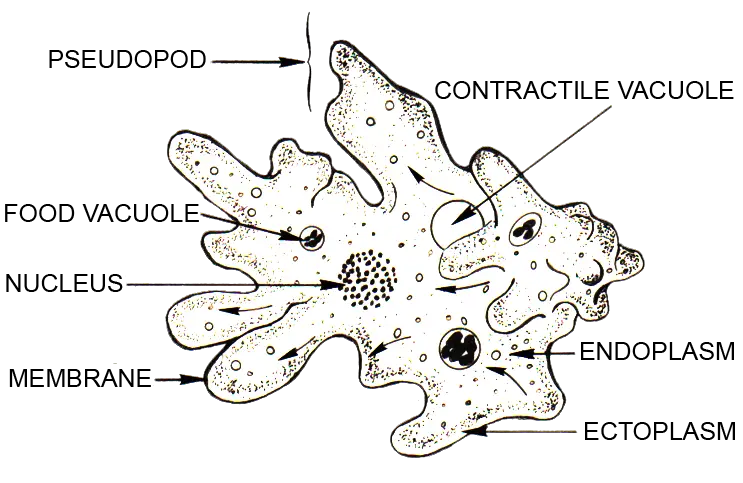Describe the Typical Movement of a Sarcodine
They are amoebas and are a blob of protoplasm formed in a single cell. When moving they form false feet or pseudopodia.

Drumlin Plan And Profile Diagrams Of A Typical Drumlin Logo Restaurant Drumlin Topographic Map
Summarize how some protozoans react to adverse conditions.

. Protozoan protozoon - any of diverse minute acellular or unicellular organisms usually nonphotosynthetic. It comprises the amebas and related organisms. These organisms have streaming cytoplasm and use temporary cytoplasmic extensions called pseudopodia in locomotion called amoeboid movement and feeding.
Mechanisms of movement in taxonomy of Sarcodina. Describe some general characteristics of protozoans. Transmission is fecal-oral via ingestion of infective cysts.
-the cell membrane is drawn with it. Some Sarcodina have firm axial rods instead of pseudopods. List several ways in which algae are a harmful and b beneficial.
Mechanisms of movement in taxonomy of Sarcodina. Class Sarcodina Sarcodina - characterized by the formation of pseudopods for locomotion and taking food. -the endoplasm moves toward an area of the cell causing a bulge.
There are three classes and many orders. 257-266 Describe the movement and feeding method of a typical sarcodine. Entamoeba muris is a one-celled organism.
Sarcodines also use pseudopods to feed and they reproduce either sexually or asexually depending on the species. As a basis for a new major dichotomy into two classes Autotractea and Hydraulea. The majority of species live in marine aquatic environments but some occur in fresh water and are important members of the soil fauna and some are parasitic in the intestinal tracts of.
There are no clinical signs. Sarcodine any protozoan of the superclass sometimes class or subphylum Sarcodina. Describe the structure and use of cilia in protozoans.
Sarcodines have long trailing cytoplasm and use unique cytoplasmic feet or extensions called pseudopodia to facilitate movement. Entamoeba is found in the cecum and colon. Describe the typical movement of a sarcodine.
The sarcodines move with a type of locomotion thats know as amoeboid movement and ciliates propel rapidly through the water What is sarcodines protist. Describe the typical moment of a sarcodine They have a flexible plasma membrane that allows them to change their shape. Which are all solitary cells that move and capture food by means of pseudopods flowing temporary extensions of the cell.
These protozoans are called Sarcodina and they move with pseudopodia. By forming cysts- the metabolic rate is slowed and a hard covering is formed. Protozoan Classification 112 Pg.
Explain the complex life cycle of Plasmodium a typical sporozoan. When moving they form false feet or pseudopodia. The organization of subclasses and orders in relationship to the classes Autotractea and Hydraulea.
Sarcodina phylum Protozoa subphylum Sarcomastigophora A superclass of protozoa which form pseudopodia for feeding and locomotion. -the cytoplasm streams into the pseudopodium. By flowing their protoplasm forward into a foot then bringing the rest of their body into the foot they can slither along.
Describe diatoms and list several uses of diatoms. -the bulge extends into a pseudopodium. These protozoa may proliferate in diarrheic.
List several characteristics of an algal bloom that help make it an unacceptable explanation for the changing of the water into blood in Exodus 7. Most sarcodines are free living. Sarcodina the largest phylum 11500 living species and 33000 fossil species of protozoans.
Sarcodine - protozoa that move and capture food by forming pseudopods. The Phylum Sarcodina is comprised of protozoan or sarcodines that share several characteristics. Entamoeba muris is common in gerbils.
Animal-like protists that use pseudopods for. Describe the typical moment of a sarcodine They have a flexible plasma membrane that allows them to change their shape.

Conceptual Drawing Of Spa By Ryan Orr Designed Around The Movement Of A Body Through A Typical Roman Spa A Contemporary Conceptual Drawing Conceptual Design


No comments for "Describe the Typical Movement of a Sarcodine"
Post a Comment